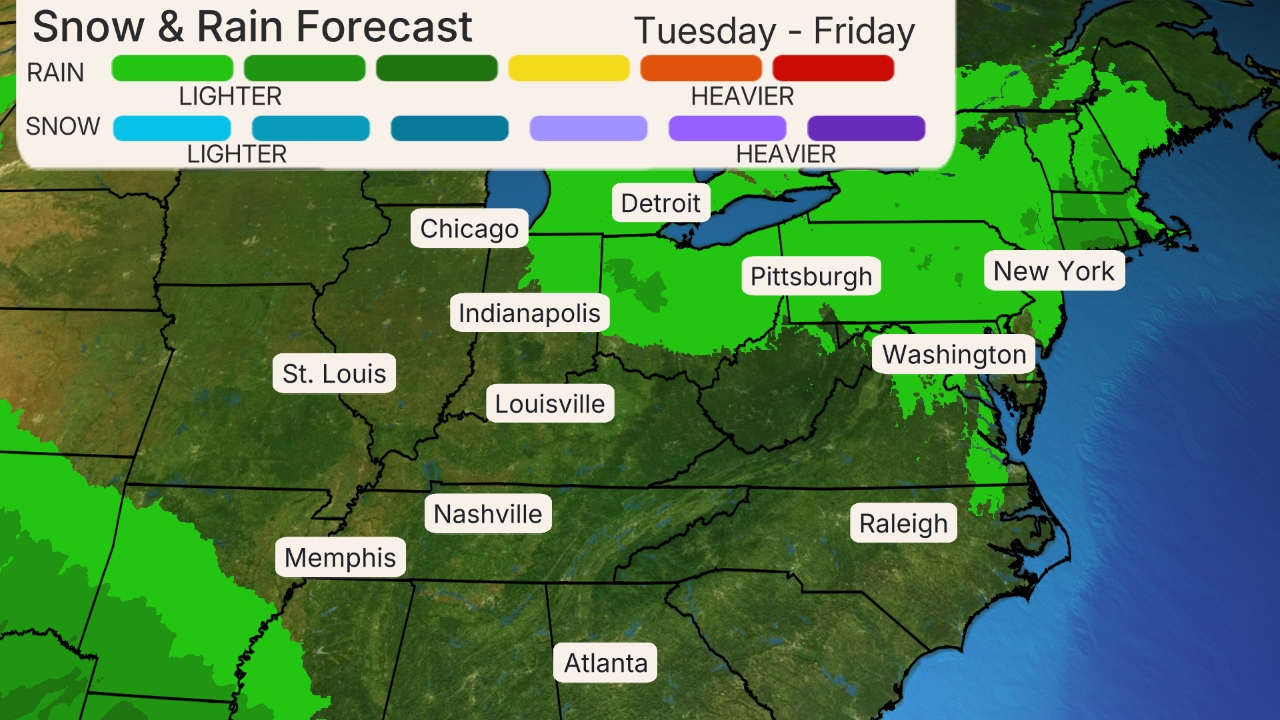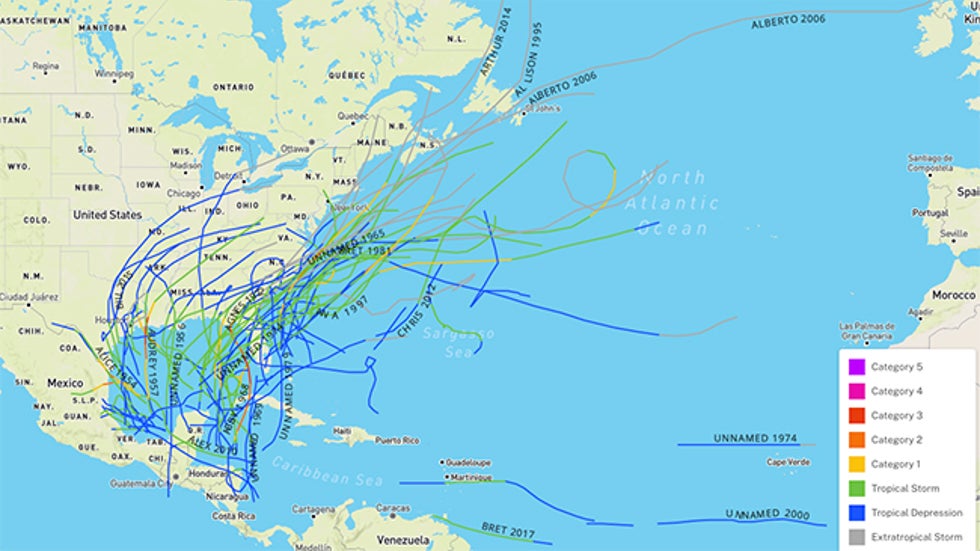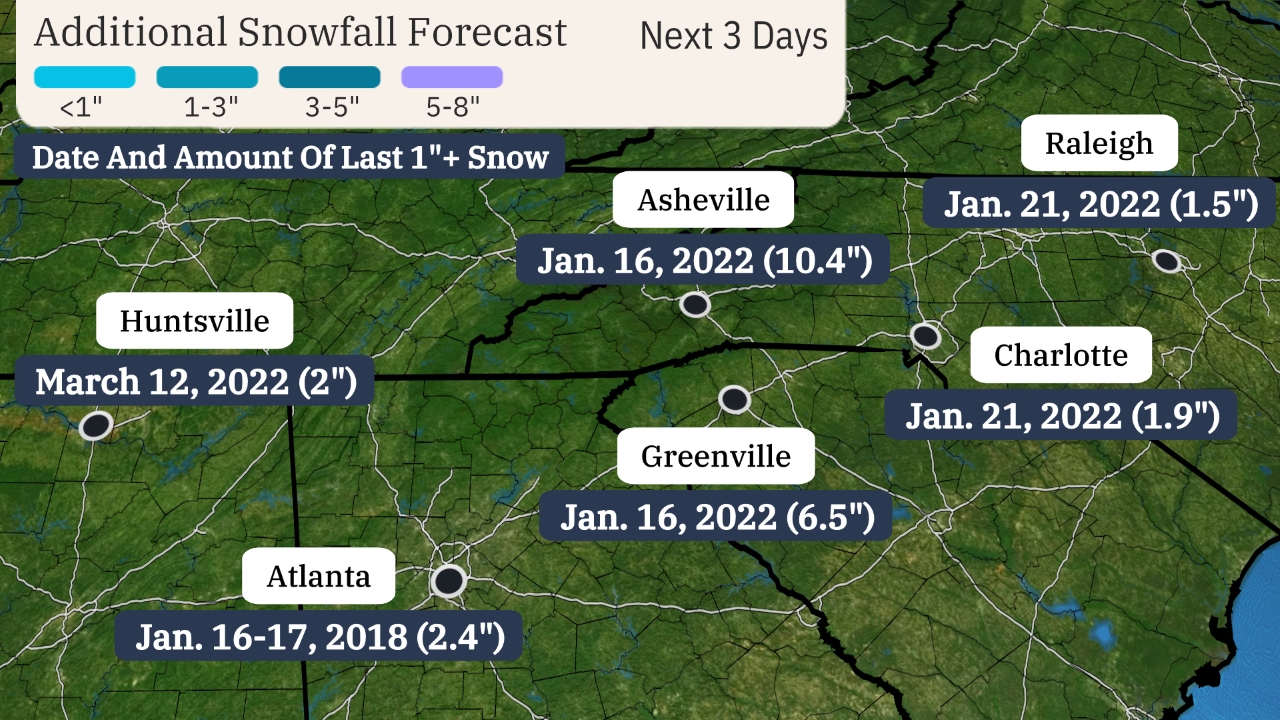A tropical depression or storm could form in the western Gulf of Mexico this week as the Atlantic hurricane season officially begins.
We've already checked Arthur and Bertha off this season's list, making this the sixth Atlantic hurricane season in a row with at least one named storm before the official June 1 kickoff. The next storm to form in the Atlantic Basin will be given the name Cristobal.
(MORE: Is An Active Hurricane Season Guaranteed After Two Early Storms?)
The National Hurricane Center has highlighted an area for possible tropical development in the southwestern Gulf of Mexico, as noted by the circle below. Currently, there is a medium chance of development in this area during the next couple of days, but those odds could increase or decrease in the week ahead.
 Area to Watch
Area to WatchIt remains too soon to determine where this potential system might track if it does form. There is a chance that it could remain stuck in the vicinity of the southwestern Gulf of Mexico, or it could eventually track northward through the western Gulf toward the United States.
Check back to weather.com for the latest on this potential tropical system. If anything, this is a reminder to refresh or develop your hurricane plan now.
Incidentally, we could be flirting with the record-earliest third named Atlantic storm, which is currently held by Tropical Storm Colin on June 5, 2016.
Potential Development Triggers: Amanda's Remnants and Central American Gyre
This tropical development may be spawned from something called a Central American Gyre, or CAG. This "gyre" is a large, broad area of low pressure that often forms in late spring and early fall over Central America and the western Caribbean Sea.
One such CAG has developed and will park itself over far southeastern Mexico and Central America through the week ahead.
The key here is that these CAGs can spawn tropical storms in the Caribbean Sea, Gulf of Mexico or Eastern Pacific Ocean.
Tropical Storm Amanda formed from this CAG in the Eastern Pacific near the coast of Guatemala over the weekend. Amanda dissipated over Central America on Sunday afternoon, but its leftover energy and spin could play a role in triggering tropical development in the southwestern Gulf of Mexico this week.
 Current Satellite
Current SatelliteOne thing we know for certain is that there is a serious threat of flooding rainfall and mudslides in Central America and southern Mexico from the CAG and Amanda's remnants.
Flooding from this setup was reported in El Salvador on Sunday morning.
#EnDesarrollo
Río se desbordó en la comunidad Darío González de San Salvador, varias personas quedaron atrapadas.
Para sacarlas, los vecinos están usando cuerdas.
Vía @DavidCruz_TV
That National Hurricane Center says that 10 to 15 inches of rain (locally, 20 to 25 inches) could fall through the middle of this week in El Salvador, southern Guatemala, western Honduras and the Mexican states of Tabasco and Veracruz. Areas from northwestern Nicaragua and Belize to the Mexican states of Quintana Roo, Campeche, Chiapas and Oaxaca could receive 5 to 10 inches of rain.
(MORE: Central America, Mexico Tropical Cyclones Have a Deadly History)
 Rainfall Forecast
Rainfall ForecastGulf of Mexico a June Hot Spot
June isn't one of the more active months of the hurricane season.
Since 1950, only 6% of all storms have formed in June, or an average of one storm every one to two years.
But many of those that do develop in June tend to do so in the Gulf of Mexico or western Caribbean Sea. They have also tended to move northward, meaning they eventually move ashore along the U.S. Gulf Coast.
 Tracks of all June tropical depressions, storms and hurricanes from 1950 to 2019.
Tracks of all June tropical depressions, storms and hurricanes from 1950 to 2019.Most of these are either tropical depressions or tropical storms because they often don't have as much time to intensify before striking land, and they may be affected by wind shear early in the hurricane season.
Only a dozen of those June developing storms became hurricanes.
The last June hurricane in the Gulf of Mexico was Alex, which made landfall in northeastern Mexico on June 30, 2010, and brought flooding rain to Monterey, Mexico, and the lower Rio Grande Valley of Texas.
Warm water is another factor that may boost tropical development.
While not as warm as midsummer, Gulf of Mexico water temperatures are currently warmer than average for this time of year and warm enough to support tropical development. NOAA reported Gulf water temperatures shattered April records dating to 1910.
(MORE: Atlantic Hurricane Season Outlook)
 Water Temperature Departures From Average
Water Temperature Departures From AverageThe Weather Company’s primary journalistic mission is to report on breaking weather news, the environment and the importance of science to our lives. This story does not necessarily represent the position of our parent company, IBM.
The Weather Company’s primary journalistic mission is to report on breaking weather news, the environment and the importance of science to our lives. This story does not necessarily represent the position of our parent company, IBM.



No comments:
Post a Comment